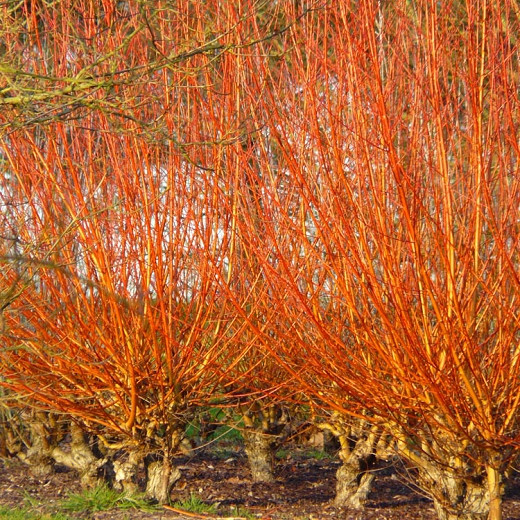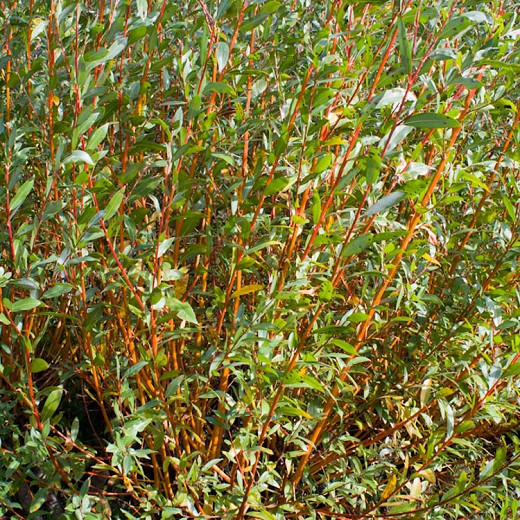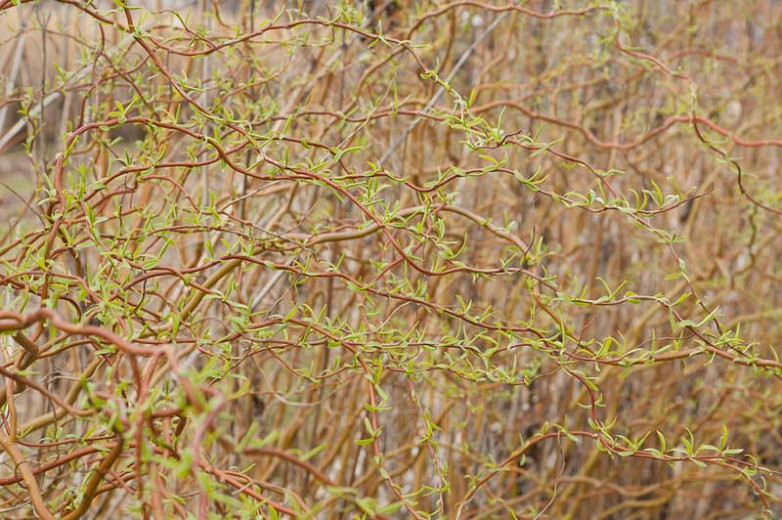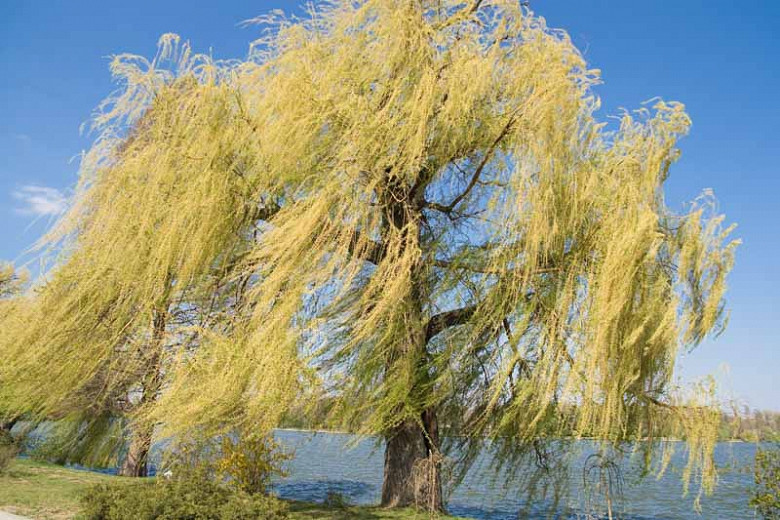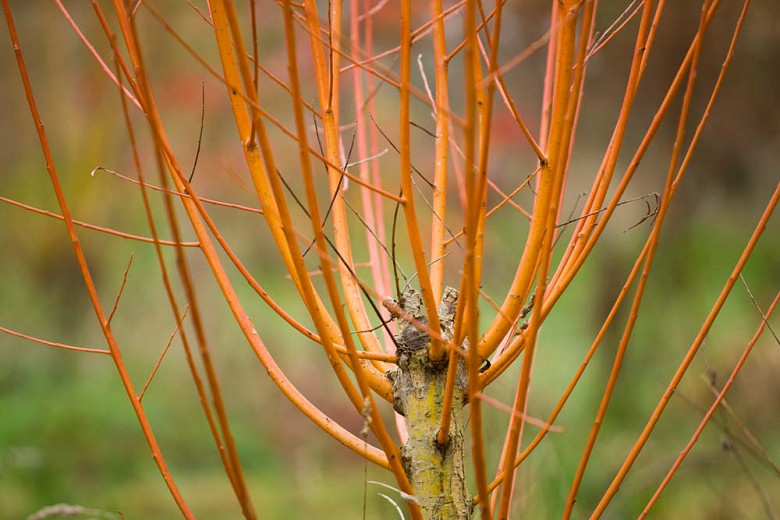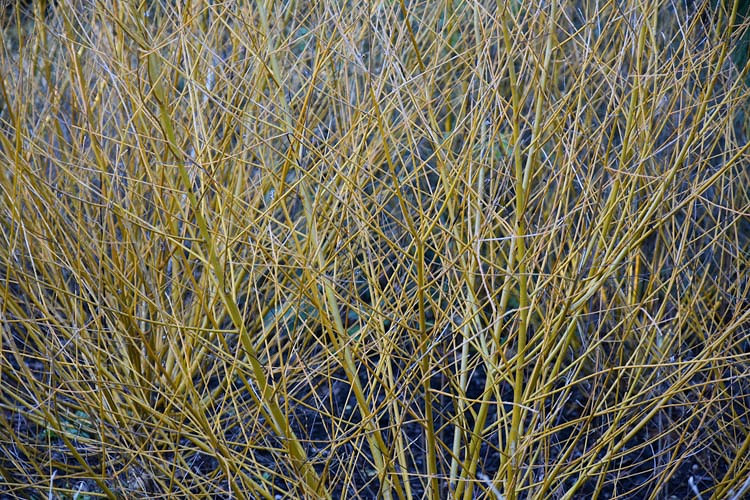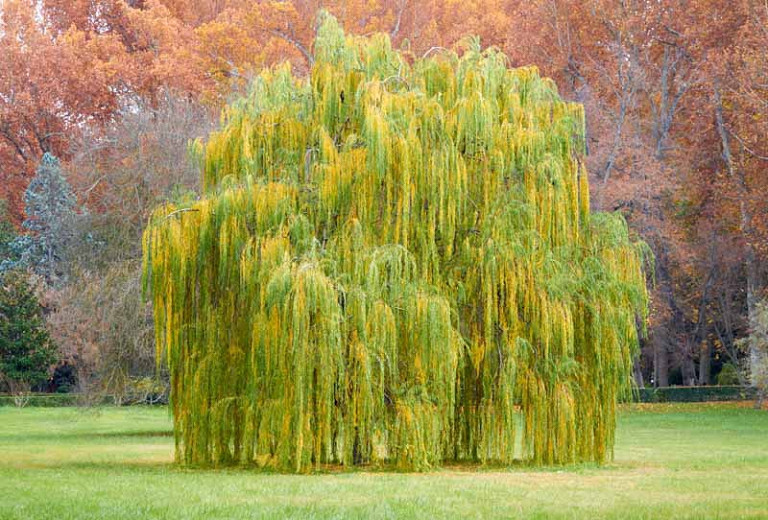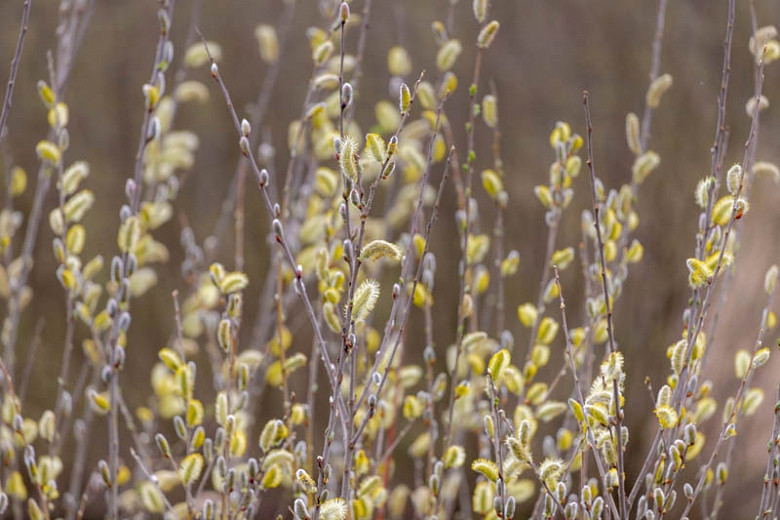Salix alba var. vitellina Yelverton (Golden Willow)
Noted for its colorful stems and stunning winter display, Salix alba var. vitellina ‘Yelverton’ (Golden Willow) is a deciduous tree, often grown as a multi-stemmed shrub. It sports bright, reddish-orange and yellow-orange new stems that are particularly noticeable and pretty in winter.
Noted for its colorful stems and stunning winter display, Salix alba var. vitellina 'Yelverton' (Golden Willow) is a deciduous tree, often grown as a multi-stemmed shrub. It sports bright, reddish-orange and yellow-orange new stems that are particularly noticeable and pretty in winter. In spring and summer, it bears narrow, lanceolate, finely-toothed leaves that usually turn yellow in the fall, before falling to the ground and revealing the spectacular stems. In late spring, flowering catkins appear on separate male and female trees. An invaluable addition to the winter garden.
- Winner of the prestigious Award of Garden Merit of the Royal Horticultural Society
- Grows quickly up to 15-70 ft. high (4-21 m) and 10-40 ft. across (3-12 m). This plant can produce 6-8 ft. (180-240 cm) of new growth in one growing season! If not pruned severely, it can eventually mature into a large shrub or medium size tree.
- Performs best in full sun to part shade, in average, moist, well-drained soils. It is not fussy about soils provided they are kept evenly moist and well-drained.
- Easy to grow, easy to care for and deer tolerant. Watch for aphids, caterpillars, leaf beetles, sawflies or rust.
- Great for shrub borders or as an informal hedge or privacy screen. Great for erosion control, along streams or ponds, for coastal gardens.
- Propagate by softwood cuttings in early summer or hardwood cuttings in winter
- While pruning is not required, it should be noted that the best winter stem color appears on new growth. For the best display, cut the stems close to the ground every year in early spring, just as the leaf buds start to swell. This radical pruning, however, means that you will have a bare spot in the garden for a few weeks. Alternatively, if severe pruning seems to onerous, one third or one half of the oldest stems could be pruned in early spring of each year, to stimulate the growth of new stems.
- Salix alba species is native to Europe, North Africa and Central Asia.
- Find where this species is invasive in the United States.
- Discover beautiful U.S. native plant alternatives.
Requirements
| Hardiness | 4 – 9 |
|---|---|
| Heat Zones | 1 – 9 |
| Climate Zones | 1, 2, 3, 4, 5, 6, 7, 8, 9, 10, 11, 14, 15, 16, 17, 18, 19, 20, 21, 22, 23, 24, A2, A3 |
| Plant Type | Shrubs |
| Plant Family | Salix – Willows |
| Exposure | Full Sun, Partial Sun |
| Season of Interest | Spring (Early,Mid,Late)Summer (Early,Mid,Late)FallWinter |
| Height | 15' – 70' (4.5m – 21m) |
| Spread | 10' – 40' (3m – 12m) |
| Water Needs | Average |
| Maintenance | Low |
| Soil Type | Clay, Loam, Sand |
| Soil pH | Acid, Alkaline, Neutral |
| Soil Drainage | Moist but Well-Drained, Well-Drained |
| Characteristics | Plant of Merit, Showy |
| Tolerance | Deer, Wet Soil |
| Garden Uses | Beds and Borders, Hedges and Screens, Ponds and Streams |
| Garden Styles | Coastal Garden, Informal and Cottage, Prairie and Meadow, Traditional Garden |
